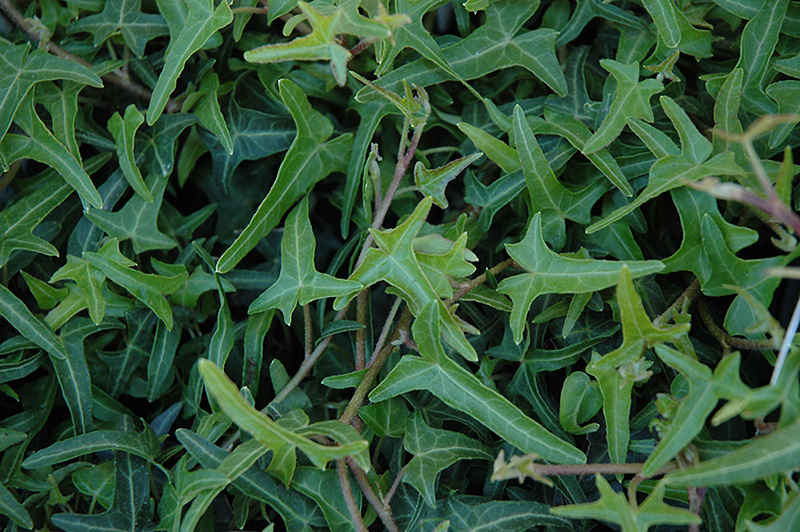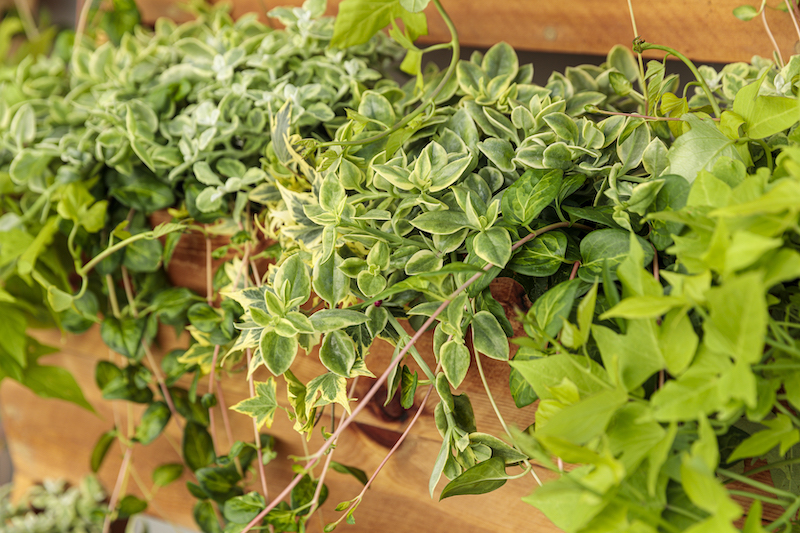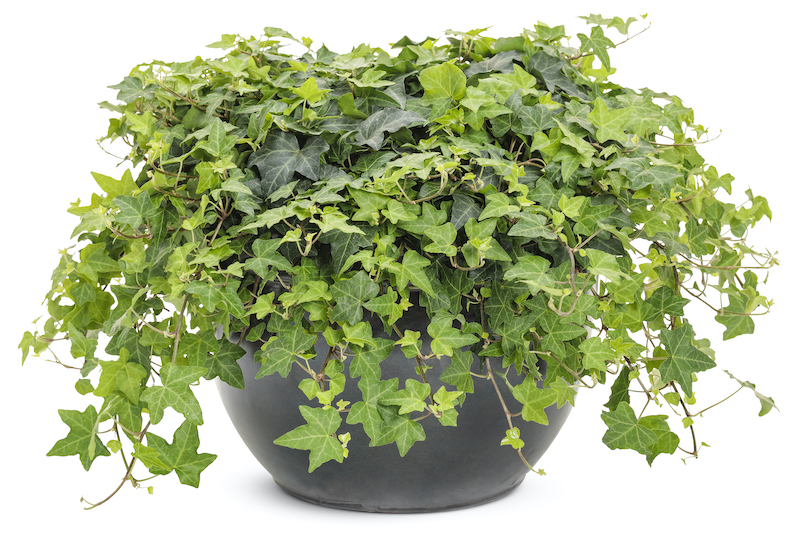Growing Ivy
Ivy is a genus of plant known as Hedera that includes more than a dozen species of climbing and creeping evergreen vines that are native to Europe and Western Asia. Most species require similar care whether they are grown in the landscape such as English Ivy (Hedera helix) or if you grow them indoors as a houseplant. English Ivy is a voracious grower and climbs using aerial rootlets to cling to surfaces. It can be seen growing on exterior buildings, wrapping around trees, climbing on fences, or crawling along the ground in a woodland setting.

Planting Ivy
Ivy prefers to be planted in well-draining, fertile soil rich in organic matter. A good mixture is garden loam mixed with compost; the goal is to create a mixture that drains quickly. Use a loose potting soil in containers so that the roots can dry out in between watering. Ivy prefers indirect light and protection from direct sun, whether planted indoors or out, as the leaves are susceptible to scorching. Ivy will tolerate a variety of light conditions; however, brighter indirect light will result in more vigorous growth with larger leaves. When growing Ivy indoors, it is always best to research the exact species you have to determine the best care and specific growing environment.

Watering Ivy
Ivy doesn’t enjoy water-logged soil and can be susceptible to root rot. Whether growing Ivy indoors or outdoors, wait until the top inch of soil dries out, then soak the root ball well. If growing Ivy in a container, be sure the plant is in a pot with ample drainage holes. Ivy appreciates a humid environment, so you can place your plant in a humid room such as a kitchen or bathroom where it will receive extra humidity and bright indirect light. Try not to place your Ivy plant near a heating vent during winter months, as this can cause Ivy to dry out, which eventually encourages insect pests.
Fertilizing Ivy
If you provide soil rich in organic matter, Ivy doesn’t need extra fertilization, particularly when grown outdoors. If you are growing Ivy as a houseplant, you can give it a boost with a well-balanced, water-soluble fertilizer such as 15-15-15 formula once a month from spring through late summer during active growth.
Pruning Ivy
Whether growing Ivy indoors or in the landscape, the main reason to prune Ivy is to keep it in bounds. If the plant has put on excess growth and is growing up a structure, trim the vines back hard in early spring.
Caring For Ivy in Pots
If growing Ivy in containers, select a pot with ample drainage holes, and plant in a fast-draining potting mixture. Place the pot in an area of your home that has medium to bright indirect light. Ivy tends to prefer cooler environments and should not be positioned near a heating vent, which can dry out the plant and encourage insect pests.

Winter Care for Ivy
No need to provide extra protection for Ivy when grown in the landscape; it is quite winter hardy. When grown in a shaded environment under a canopy of leaves, the deciduous tree leaves will fall and provide additional winter protection for Ivy naturally. If planted as a houseplant, avoid placing Ivy near heating vents and cut back on watering in the winter.
 |
Author Chris Link - Published 03-16-2023 |
